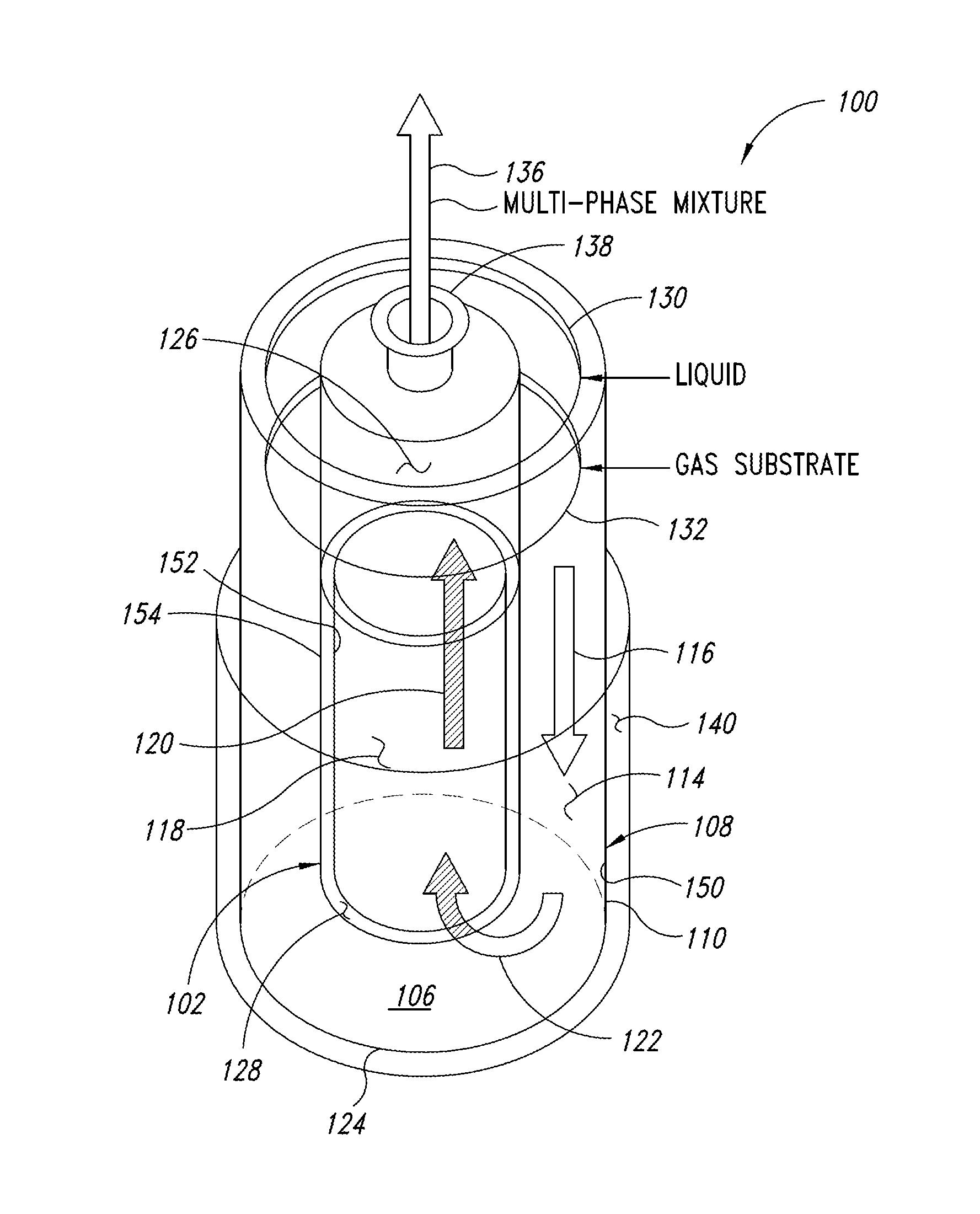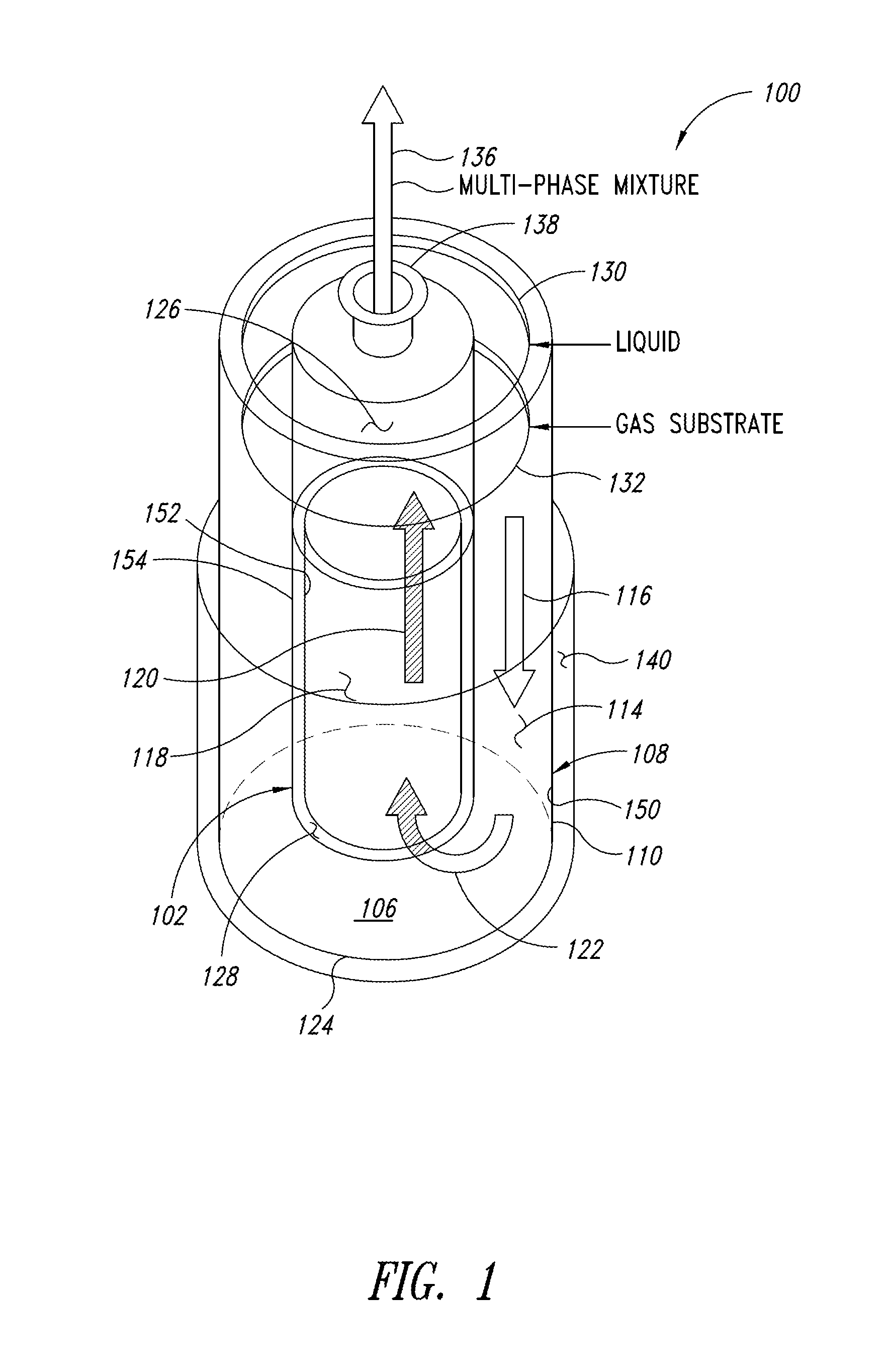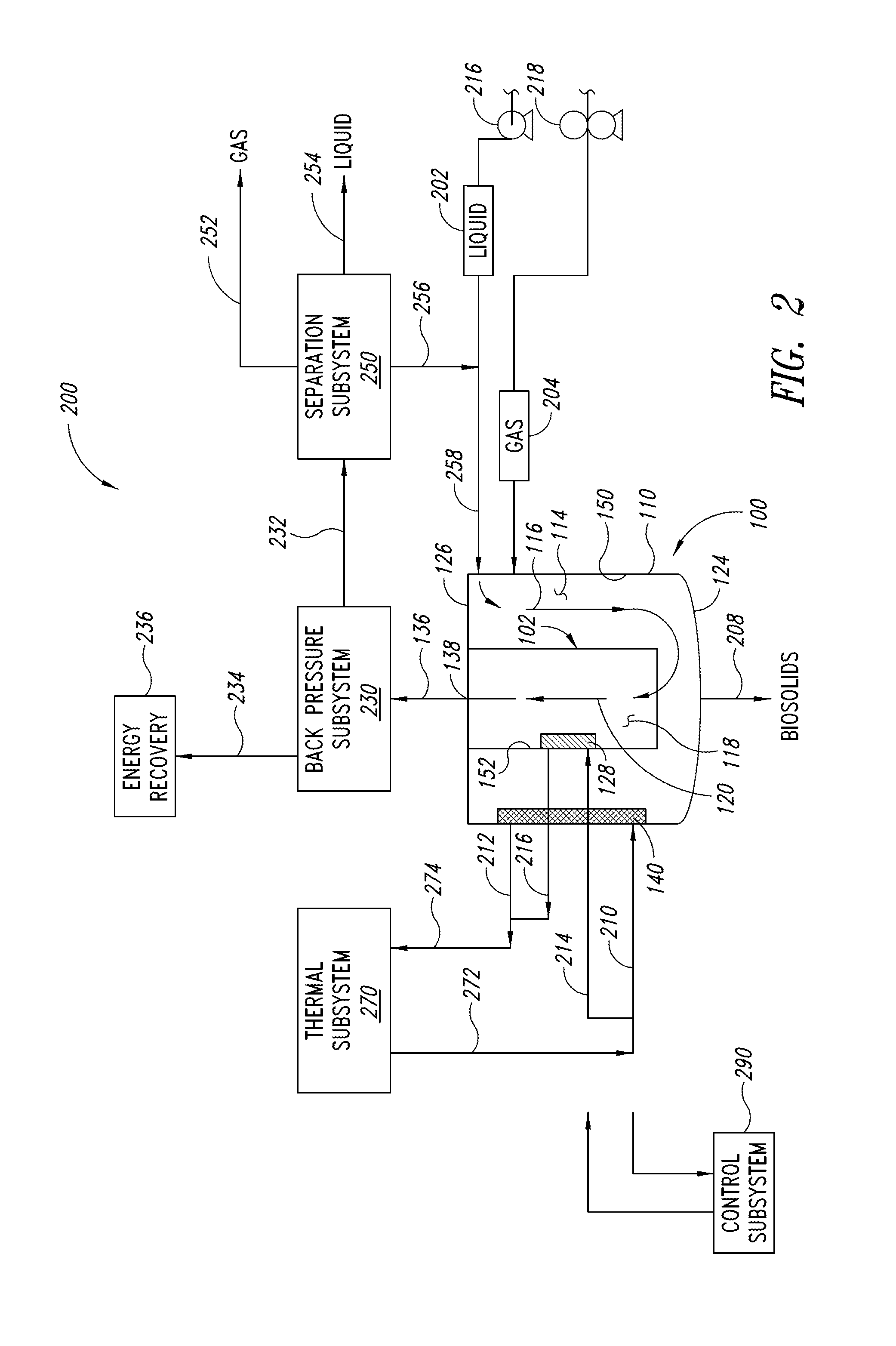Gas-fed fermentation systems
a fermentation system and gas-fed technology, applied in the field of fermentation systems, can solve the problems of insufficient global available farm land to meet the increasing needs of both food and fuel, high production cost, and insufficient amount of biofuel generated to date, and achieve the effects of efficient heat exchange and waste gas removal, efficient mass transfer of gaseous substrates, and efficient heat exchang
- Summary
- Abstract
- Description
- Claims
- Application Information
AI Technical Summary
Benefits of technology
Problems solved by technology
Method used
Image
Examples
Embodiment Construction
[0029]In the following description, certain specific details are set forth in order to provide a thorough understanding of various embodiments. However, one skilled in the art will understand that the invention may be practiced without these details. In other instances, structures, standard vessel design details, detailed design parameters of available components such as liquid or gas distributors, pumps, turbines, and similar, details concerning the design and construction of American Society of Mechanical Engineers (ASME) pressure vessels, control system theory, specific steps in one or more fermentation processes, and the like have not been shown or described in detail to avoid unnecessarily obscuring descriptions of the embodiments. Unless the context requires otherwise, throughout the specification and claims which follow, the word “comprise” and variations thereof, such as, “comprises” and “comprising” are to be construed in an open, inclusive sense, that is, as “including, bu...
PUM
| Property | Measurement | Unit |
|---|---|---|
| pressure | aaaaa | aaaaa |
| pressure | aaaaa | aaaaa |
| velocity | aaaaa | aaaaa |
Abstract
Description
Claims
Application Information
 Login to View More
Login to View More - R&D
- Intellectual Property
- Life Sciences
- Materials
- Tech Scout
- Unparalleled Data Quality
- Higher Quality Content
- 60% Fewer Hallucinations
Browse by: Latest US Patents, China's latest patents, Technical Efficacy Thesaurus, Application Domain, Technology Topic, Popular Technical Reports.
© 2025 PatSnap. All rights reserved.Legal|Privacy policy|Modern Slavery Act Transparency Statement|Sitemap|About US| Contact US: help@patsnap.com



